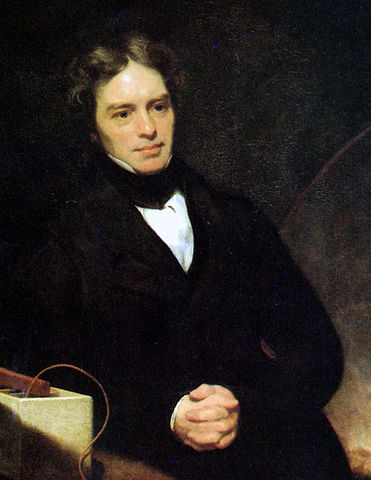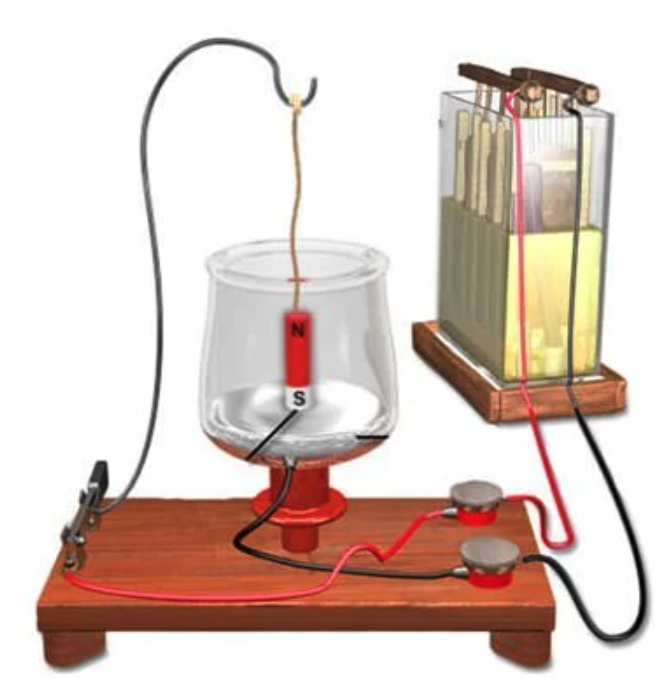Study Guide: Michael Faraday
Early Years
Faraday (1791 - 1867) was born in London, England. His father was a blacksmith. Before they married, his mother worked as a servant. Due to the strong class (or caste) structure of English society, it was a terrible place for the poor, and Faraday’s family lived in grinding poverty.
Faraday was able to attend a small local school to receive a very basic education up to the age of 13. However, before the enforcement of child labor laws, the children of the poor were expected to earn money for their families as soon as they were strong enough. The majority of children worked long hours in the dangerous and unhealthy factories of the English Empire.
More information on child labor:
We will never know how many great people were lost in the mills of child labor factories. Faraday was one of the lucky few. He found a job working as a delivery boy for a bookshop. He worked hard, and was promoted to become a trainee bookbinder.
Reading Science
In between book binding tasks, Faraday would explore the bookshelves and read about the wider world. He began studying science and eventually found two favorite books: The Encyclopedia Britannica and Conversations on Chemistry. Faraday became so interested in science that he used some of his meager earnings to buy some experimental supplies to see if what he was reading was true.
Curiosity and Discovery
Sir Humphrey Davy was one of Michael Faraday’s heroes. When Davy was giving lectures nearby, Faraday would find ways to attend. Davy gradually noticed the boy, and realized that he was curious and thoughtful. He even allowed Faraday to visit his lab and took the time to answer some of teh boy’s questions.
One day Davy suffered a serious injury in a laboratory accident. He was unable to write and asked Michael to work for him by writing his lab notes. This was a dream come true for Faraday. Davy soon saw the boy’s potential, and made him chemical assistant at the Royal Institute. As the years went by, Faraday was promoted, and eventually became a full professor at one of the world’s most prestigious universities.
The Discovery of Electric Induction
Faraday worked for 10 years to prove that a magnet could induce electricity. In 1831 he finally succeeded by using two coils of wire wound around opposite sides of a ring of soft iron. The first coil was attached to a battery; when a current passed through the coil, the iron ring became magnetized. A wire from the second coil was extended to a compass needle a metre away, far enough so that it was not affected by current in the first circuit.
When the first circuit was switched on, Faraday observed a momentary deflection of the compass needle and its immediate return to its original position. When the primary current was switched off, the compass needle moved again, but in the opposite direction.
Building on this observation and other experiments, Faraday showed that changes in the magnetic field around the first coil create a current in the second coil. He also demonstrated that an electric current can be created by moving a magnet, by turning an electromagnet on and off, and even by moving an electric wire within the Earth’s magnetic field. Within a few months, Faraday even built the first electric generator.
Some of Faraday’s Achievements:
- 1821: Discovery of Electromagnetic Rotation. This would eventually become the electric motor.
- 1823: Discovery of gas liquefaction and refrigeration. He showed that ammonia could be liquefied under pressure, and then evaporated to cause cooling. He showed that mechanical pumps could change a gas at room temperature into a liquid. This liquid could then be evaporated, cooling its surroundings. The gas could be collected and compressed in a pump to liquid again. This led to the refrigerators we all use today.
- 1825: Discovery of Benzene. This is one of the most important substances in chemistry as it can make new materials and also helps to understand chemical bonding. He discovered this in an oily deposit left behind from producing gas for lighting.

- 1831: Discovery of Electromagnetic Induction. This was a very important discovery for the future of science and technology. He discovered that a varying magnetic field causes electricity to flow in an electric circuit. Faraday found tht moving a magnet causes a current to flow. The stronger the magnet is, the bigger the current is. Pushing a bar magnet into coil of wire can create a larger current. People had only been able to produce electric currents with batteries, but now Faraday had shown that movement could be turned into electricity.
- 1845: Discovery of the Faraday Effect—a magneto-optical effect. This showed that light is an electromagnetic wave. He discovered that a magnetic field causes the plane of light polarization, or the division of light, to rotate.
- 1845: Discovery of diamagnetic effects, some weak and some strong. Diamagnetism competes against the direction of a magnetic field. For example if you hold the north pole of a magnet near a strongly diamagnetic substance, this gets pushed away by the magnet. This can be used to make objects float in the air.
- Invented the toy balloon.
- Helped Albert Einstein get his first job.



